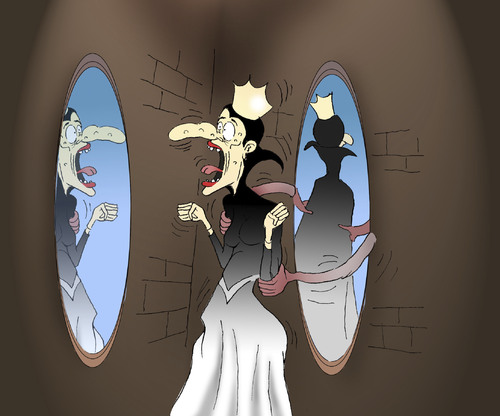

The exact craftsmanship of the mirrors is still somewhat mysterious to scholars, but the fascination for these ‘transparent’ mirrors (as they are called in Chinese) is enduring they are extremely rare and very beautiful. The result is a reflective mirror with only the most subtle variations that, when lit, reflect a pattern. In the case of the Cincinnati Art Museum artifact, another bronze plate with Chinese characters in relief was added to the mirror to cover the originally cast statue. That side was then covered with a mercury-based coating that subtly added more definition to the image. The varying thickness of the mirror would then subtly mimic the image in curvature on the reflective side. Then they slowly smoothed out the metal on the other side and polished it to a reflective shine. To make the mirror, craftsmen probably cast the desired image in raised bronze on one side of a medallion. Only three other rare Buddhist themes are known, including one in the Metropolitan Museum of Art in New York City. “This is a national treasure for China and we are so lucky to have rediscovered and seen this rare object in Cincinnati,” she added in a statement. On the dark wall opposite the mirror, a majestic image of the Buddha appeared in the center of a “starburst” pattern. The restorer used her phone’s flashlight and aimed the beam at the glossy surface. Sung a conservation expert to shine a light on the mirror. It had a similar design to the Edo examples, but was smaller and had a more complex Chinese script. The Cincinnati mirror was older, dating to the 15th or 16th century. Sung, these Edo specimens resembled an item that has languished in the museum’s collections since the last exhibit in 2017. Other examples of these extraordinary mirrors were made in the Edo period of Japan. The earliest examples date back to the Chinese Han Dynasty (202 BCE-220 CE). Hou-mei Sung, researching rare ‘magic mirrors’. In the spring of 2021, the Cincinnati Art Museum’s curator of East Asian art, Dr.


 0 kommentar(er)
0 kommentar(er)
